On this page
Pacific Coast AvifaunaThis page lists the issues of the journal Pacific Coast Avifauna which was published by the Cooper Ornithological Society from 1900 to 1974.The contents of numbers 30 and 36, if published, have not been identified.
Cooper Ornithological Society pagesThere are two Cooper Ornithological Society sections on the site:
Studies in Avian Biology
Pacific Coast Avifauna
Cooper Ornithological SocietyFor more information about the society see the Cooper Ornithological Society website.
|
|
|
|
Ecology of Pomarine, Parasitic, and Long-Tailed Jaegers in Northern AlaskaWilliam J. Maher
Pacific Coast Avifauna Number 37
Cooper Ornithological Society
1974
From the introduction: "Collectively, the three species of jaegers are the most abundant, widespread, and hence most significant avian predators in northern Alaska. They are the pomarine jaeger (Stercorarius pomarinus), the parasitic jaeger (S. parasiticus), and the long-tailed jaeger (S. longicaudus). The three differ in size, but all are ground-nesters on flat or rolling tundra, and they overlap in distribution, habitat, and other features of their ecologies. The parasitic jaeger nests in northern Alaska from the Brooks Range north to the Arctic Ocean. The pomarine jaeger nests only in coastal areas. The long-tailed jaeger nests regularly from the Brooks Range north to the southern part of the coastal plain. The long-tailed and pomarine jaegers are usually allopatric; the parasitic jaeger is sympatric with both species, and occasionally, all three are sympatric. This study of the ecology of these three jaegers deals primarily with the density of their breeding populations, their fluctuations in time and space, and their food habits. All three species are considered as actual or potential competitors, and study of the degree of niche overlap among them has been an important objective of this work."
|
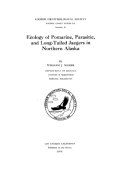
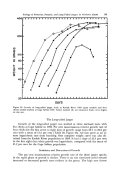 |
|
Life Histories of Central American Birds III
Families: Cotingidae, Pipridae, Formicariidae, Furnariidae, Dendrocolaptidae, And Picidae
Alexander F. Skutch
Photographs by the author
Illustrations: Don R. Eckelberry
Pacific Coast Avifauna Number 35
Cooper Ornithological Society
1969
From the introduction: "This third volume of Life Histories contains accounts of representatives of five families of the Tyranni, that major division of the great order of passerine birds which is considered more primitive, because its members have vocal organs of simpler structure and accordingly produce less varied songs than we find in the larger branch of this order, the Oscines or true songbirds. The five families treated here are all confined to the Western Hemisphere, and their members are found largely in the tropical regions of the American continents, Only one of these families, the Furnariidae or ovenbirds, is well represented in the temperate regions of southern South America, and only a single representative of these five large families has extended its range as far northward as the southern boundary of the United States. The sixth family of the Tyranni that is represented north of the Isthmus of Panama by more than one rare species, the Tyrannidae or American flycatchers, was, in order to keep these volumes fairly uniform in size, treated in Part II. For the same reason, the present volume has been extended beyond the passerines to include the nearly cosmopolitan woodpecker."
|

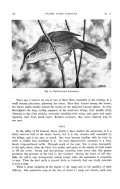 |
|
Life Histories of Central American Birds II
Families: Vireonidae, Sylviidae, Turdidae, Troglodytidae, Paridae, Corvidae, Hirundinidae And Tyrannidae
Alexander F. Skutch
Illustrations: Don R. Eckelberry
Pacific Coast Avifauna Number 34
Cooper Ornithological Society
1960
From the introduction: "This volume of life histories follows closely the plan of its predecessor. The observations recorded herein were made in the same places as those which fill the first volume, in the introduction to which they are briefly described. But the studies reported here were made over a longer interval of time, extending from 1929 to 1956. Nearly all of my more recent bird watching has been done on my farm at Quizarra where I have resided since 194 1. It is on the northern side of the valley of El General which is on the Pacific slope of southern Costa Rica at an altitude of about 2500 Feet."
|
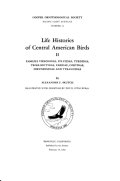
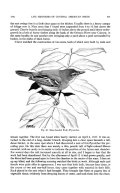 |
|
Distributional Check-List of the Birds of Mexico, Part IIAlden H. Miller, Herbert Friedmann, Ludlow Griscom, Robert T. Moore
Paintings: Andrew Jackson Grayson
Pacific Coast Avifauna Number 33
Cooper Ornithological Society
1957
From the introduction: "Part I of the Distributional Check-list of the Birds of Mexico was published in 1950 as Pacific Coast Avifauna No. 29 and encompassed, in the sequence of Wetmore's 'Systematic Classification for Birds of the World,' the families from the Tinamidae to and including the Trochilidae. The present part II covers all the remaining bird groups. In the introduction to part I the plan and organization of the undertaking were described. Since, however, part II appears as a separate publication, these matters need to be reviewed for the benefit of users of this final section of the list. Moreover, certain additions should be recorded in procedure and participation which inevitably took place in the course of our work of the last eight years. The present check-list, we emphasize anew, is the first detailed list for Mexico, and as such has many inadequacies and leaves many questions unresolved. Its greatest value should be as a point of departure and a stimulus to release into print countless additional significant data hitherto lying dormant, or even buried, in various museums and notebooks. The present group of author-compilers feels, in a very real sense, that the rapidity with which the Mexican Check-list becomes out of date will be a measure of its usefulness in advancing knowledge, It should spur workers to concentrate on revealed gaps in our knowledge of Mexican birds and their distribution."
|
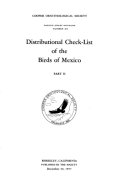
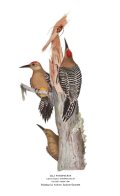 |
|
Birds of Pine-Oak Woodland in Southern Arizona and Adjacent MexicoJoe T. Marshall Jr
Pacific Coast Avifauna Number 32
Cooper Ornithological Society
1957
From the introduction: "Woodland of mixed pines and oaks is familiar mountain scenery in Mexico, whence it extends into southeastern Arizona along with many kinds of Mexican birds. This woodland occupies a belt from about 5500 to 6500 feet in elevation between encinal (oak woodland) below and ponderosa pine forest above. It combines tree forms of both these zones so as to make a smooth transition between them. The present report compares the numbers of each species of breeding bird in a series of stations, within pine-oak woodland, which were visited in the summers of 1951, 1952, and 1953. These sites extend from the Pinaleno and Santa Catalina mountains in Arizona south into central Sonora and to the Sierra Madre Occidental of northwestern Chihuahua. The stations were selected in relatively flat terrain in well-developed pine-oak woodland where there was water and a good place to camp. The stations differed in the following ways which affected the local occurrence of birds: steepness, whether on a ridge or in a canyon, amount of water and riparian vegetation, stature and spacing of trees, amount of grass, and proximity to coniferous forest."
|
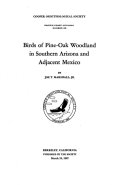
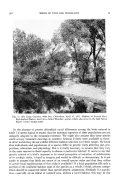 |
|
Life Histories of Central American Birds
Families: Fringillidae, Thraupidae, Icteridae, Parulidae And Coerebidae
Alexander F. Skutch
Illustrations: Don R. Eckelberry
Pacific Coast Avifauna Number 31
Cooper Ornithological Society
1954
From the introduction: "Lying between two great continents each with its peculiar avifauna, the thousand mile-long isthmus known as Central America has a wonderfully rich bird life. The greater part of the region is comprised in the Caribbean lowlands, where the rainfall is high and rather uniformly distributed through the year and the forests tall and heavy. The colorful bird life of these warm and humid lowlands is closely related to that of northern and eastern South America. Nearly all the genera, and the majority even of the species of these Caribbean birds, are found also in the southern continent; many of the species extend across the tropics to Paraguay and northern Argentina. On the Pacific side of the Cordillera, in southern Costa Rica and adjacent Panama, lies another area of low elevation and heavy rainfall, where the forests resemble those of the Caribbean region and the avifauna is much the same, although there are numerous forms endemic to this section and many of the Caribbean types fail to occur. In the drier country stretching along the Pacific coast from the Gulf of Nicoya in Costa Rica to the Isthmus of Tehuantepec in Mexico, and in deep arid valleys in the rain shadow of the mountains on the Caribbean side of northern Central America, there is found a quite distinct group of birds of varied origins, many of which appear to be derived from the north rather than from the south. Only a few of the wider-ranging and more adaptable species of birds dwell in the most humid as well as the most arid sections of the Central American lowlands."
|
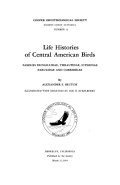
 |
|
Distributional Check-List of the Birds of Mexico, Part IHerbert Friedmann, Ludlow Griscom, Robert T. Moore
Pacific Coast Avifauna Number 29
Cooper Ornithological Society
1950
From the introduction: "A distributional check-list of the birds of Mexico has long been a desideratum of all ornithologists concerned with the systematics and distribution of North American birds. The richness of the Mexican avifauna and the widely scattered disposition of the material preserved in collections have served to discourage attempts in the past to supply such a compilation. The present check-list is, therefore, a first one, and like all such pioneer ventures, is bound to serve not only as a summation of present recorded knowledge, but also as a stimulus to release into print countless additional data hitherto lying dormant, or even buried, in various repositories and notebooks. The compilers feel, in a very real sense, that the rapidity with which, and the extent to which, this check-list becomes out of date will be a measure of its usefulness in advancing knowledge, just as its continuing usefulness for what it contains will determine its place in the working library of students of American birds. Its greatest service to ornithology may be as a spur to workers to concentrate on revealed gaps in our knowledge of Mexican birds and their distribution."
|
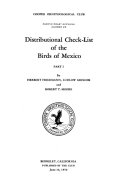
|
|
Fourth Ten Year Index to the Condor: Volumes XXX-XL 1929-1938John McB. Robertson
Pacific Coast Avifauna Number 28
Cooper Ornithological Society
1947
From the introduction: "When, in 1937, I responded to Joseph Grinnell's call for someone to compile the Fourth Ten Year Index to The Condor, I had no idea that its completion would be delayed so long. During the ensuing years the increase of duties in my vocation seriously curtailed the spare time available for work on the Index, but in 1946 I was able to conclude the task. I have followed closely the plan of the Third Ten Year Index to The Condor, by George Willett." |
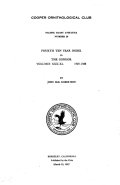
|
|
The Distribution of the Birds of CaliforniaJoseph Grinnell and Alden H. Miller
Pacific Coast Avifauna Number 27
Cooper Ornithological Society
1944
From the introduction: "For sixty years the study of the distribution of birds in California has been the interest of an active company of western ornithologists. The present accounting seeks to embrace a large body of evidence accumulated by them. Of necessity it is a digest of their seemingly numberless observations and collections. In the course of time, repeated efforts to assimilate this information have led us to a kind of synopsis of distribution which stresses the habitat requirements of individual species-the critical factors of the environment which have direct bearing on their existence, and these in turn as cause for the patterns of occurrence in space which may be witnessed. Diversity of terrain and environment in the state of California not only account for the great number of avian species in the area and for the many locally endemic subspecies of them, but it leads to complicated outlines of range which in their intricacies reveal some of the causes for spatial limitation. All these matters must be judged against a background knowledge of the life history of the species. This information on life history is not related in this work, but it has constantly been used in shaping our statements about occurrence and habitat."
|

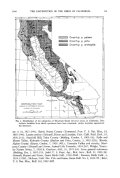 |
|
Bibliography of California Ornithology Third Installment to end of 1938Joseph Grinnell
Pacific Coast Avifauna Number 26
Cooper Ornithological Society
1939
From the introduction: "It would be commonplace to expatiate here on the necessity of knowing the literature in any given field of study, especially before any attempt one's self to contribute in that field. Accepting the fact, I need only point out that our knowledge of birds in general, and of those of restricted areas, has been accumulating at, so far, an ever accelerating rate. Not only the numbers of printed contributions, but the numbers of vehicles of publication, have been multiplying. Without any sort of bibliography, the task of the beginning research student toward gaining a knowledge of preceding work in his chosen sub-field would be well-nigh baffling, even with the help of such indexes as may be currently available to a few of the periodicals. The present bibliography is organized to provide ready aids not only to the specializing student of Californian bird-life but to the average intelligent enquirer, whether local or at large."
|
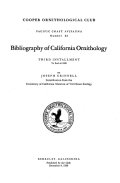 |
|
The Natural History of MagpiesJean M. Linsdale
Pacific Coast Avifauna Number 25
Cooper Ornithological Society
1937
From the introduction: "The magpies are peculiarly suitable for an intensive study because they comprise a group which possesses many distinctive features of behavior and of structure. Many races have developed, and ‘these inhabit extensive areas in the northern hemisphere. Since the magpie, wherever it occurs, prefers to live close to man, and since it is of large size, for a passerine species, a great many detailed facts have been observed in its natural history. Much of this information has been published, but it is available only in scattered places and in several different languages. No previous attempt has been made to gather together and summarize this information. In central California, I have had opportunity over a period of several years to make first-hand observations in the field upon the well-marked yellow-billed form, Pica nuttallii, and to study it in practically its entire range. An opportunity has also been afforded me to make field studies on the black-billed race, Pica pica hudsonia, in various localities in its range in the western United States. Availability of both these birds for natural history study has been excellent."
|
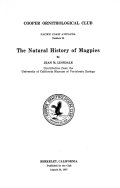
 |
|
Birds of the Charleston Mountains, NevadaA. J. Van Rossem
Pacific Coast Avifauna Number 24
Cooper Ornithological Society
1936
From the introduction: "The Death Valley Expedition of 1891 entered the Charleston Mountains at several points. C. Hart Merriam, the leader of that expedition, noted numerous species of birds from low altitudes at the south end and east side of the range, and Edward W. Nelson and Theodore S. Palmer collected a few specimens at about 8000 feet altitude in Trout Canon on the west slope. However, save for the birds and mammals collected by these men, the higher parts of the mountains appear to have escaped the attention of naturalists until 1923. In that year, and in 1925, Edmund C. Jaeger made botanical studies there. Later, this author published a list of 40 species of birds as observed by him in June, 1926. William H. Burt, assisted by Harry H. Sheldon and Thomas Dawson, made collections of mammals in this region in 1928, 1929 and 1930 and brought back with them a few birds collected incidentally. The last indicated specimens proved to be so interesting that the present writer took as much time as could be spared from his routine duties, and himself made more or less extended field trips into the Charleston region. He spent two weeks in the field in September, 1930, one week in February, 1931, three weeks in October, 1931, the months of July and August, 1932, and one week in November, 1932. It is the material and observations assembled during this total of fifteen weeks that form the chief basis of this report, though supplementary data from the Death Valley report (Merriam, Nelson, Palmer, Bailey), from Burt, and from Jaeger are acknowledged in appropriate places."
|

 |
|
The Birds of NevadaJean M. Linsdale
Pacific Coast Avifauna Number 23
Cooper Ornithological Society
1936
From the introduction: "States furnish convenient, even if not natural, units for the study of occurrence of birds in North America. Such studies are useful from several points of view. Every person with a serious interest in birds desires more complete information on the distribution of the species. Progress in analysis of many broad problems in avian biology awaits more thorough accounts of the birds of some of the states. Satisfactory solutions of even the simplest questions which confront administrators of wildlife resources depend upon an adequate knowledge of the fauna of the country. The Great Basin remains one of the last large areas in the country the avifauna of which is little known. Records assembled in the present report are calculated to fill this gap in our knowledge of distribution of western birds in so far as field work up to the present in the state of Nevada gives basis for it. Nevada ranks sixth in size among the states, but its avifauna has been studied probably least of all. It is remarkable that this large area has been without resident bird students for so long."
|
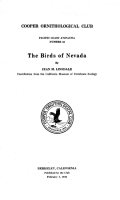
|
|
Birds of Nunivak Island AlaskaHarry S. Swarth
Pacific Coast Avifauna Number 22
Cooper Ornithological Society
1934
From the introduction: "In the summer of 1927 Mr. Cyril Guy Harrold made a trip to Nunivak Island, Alaska, on behalf of the California Academy of Sciences, accompanied part of the time by Dr. George Haley of St. Ignatius College (now University of San Francisco). Dr. Haley's interests were botanical, part of his collection coming to the Academy; Mr. Harrold devoted himself to birds and mammals. Harrold's itinerary was as follows : Seattle, May 10; Sitkalidak Island, Alaska, May 15 (5 hours); Akutan Island, May 17 to June 13; Unalaska, June 14 to June 23; Nome, June 28 (4 hours); Nunivak Island, June 30 to November 6. The resulting collection numbered 555 bird skins, 10 bird skeletons, "14 mammals, 12 sets of birds' eggs. Of the enthusiasm, industry and endurance that went into the making of this collection it is impossible to speak too highly. The trip grew from Mr. Harrold's suggestion. He was anxious to visit the region and for the sake of the experience offered to donate his services; the Academy paid for his actual expenses and transportation. The specimens are all beautifully prepared, and as the collection includes many of the larger water birds this implies skill and hard labor to a greater degree than is usually called for in a ordinary field work. Mr. Harrold's enthusiasm kept him upon Nunivak Island until a dangerously late date. He postponed departure when opportunity offered in early October, and before the expected boat returned from the mainland, ice swept down from the north, cutting off communication. It was a mere chance that the ice opened again for a long enough period to permit approach of a boat from Nome that took him off. As it was, he was reduced to using bird carcasses for food, and had resigned himself to the prospect of spending the winter in the Eskimo village."
|

|
|
A Revised List of the Birds of Southwestern CaliforniaGeorge Willett
Pacific Coast Avifauna Number 21
Cooper Ornithological Society
1933
From the introduction: "Since the publication of Avifauna Number 7, in 1912, more than twenty years have passed. This intervening period has been one of great activity in the study of California ornithology, resulting in a very considerable increase in -knowledge of our birds, both as to their occurrence and distribution, and their systematic classification. In addition to this, when we consider the changes in bird population brought about by bringing under cultivation a large percentage of hitherto wild land, as well as by introduction of foreign species, it is clear that our bird list of more than twenty years ago is subject to much emendation. It has been considered worthwhile, therefore, to entirely re-vamp the old list and bring it up to date, so far as is possible."
|

|
|
Third Ten Year Index to the Condor Volumes XXI-XXX 1919-1928George Willett
Pacific Coast Avifauna Number 20
Cooper Ornithological Society
1931
From the introduction: "The writer, with the assistance of his wife, has occupied several months in the preparation of this, the third ten year index to The Condor. In a general way it follows the second ten year index to The Condor and the latest ten year index to The Auk. A few minor changes have been made, however, which seem to the writer to add to the usefulness or simplicity of the arrangement."
|
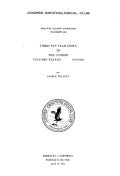
|
|
Birds of the Portland Area, OregonStanley G. Jewett, Ira N. Gabrielson
Pacific Coast Avifauna Number 19
Cooper Ornithological Society
1929
From the introduction: "The Portland area as covered in the present paper comprises within its boundarie the territory easily reached from the city of Portland, including Government Island and Sauvies Island, which are in the Columbia River, close to the Oregon shore. No Washington State records are included in this paper, although the Vancouver district might be considered part of the area. The dominant geographical features are the valleys of the Columbia and Willamette rivers. The former river flows nearly due west along the northern boundary of our area and the latter flows north into the Columbia, somewhat to the west of the center. For our purposes we have taken in the Willamette Valle, south to the falls at Oregon City, and the Columbia from the eastern boundary of Multnomah County to its west line. In addition, Sauvies Island, part of which lies west of Multnomah County, has been included, for the reason that it serves as a hunting ground for a large number of Portland sportsmen and is therefore a logical part of this area."
|

 |
|
Directory to the Bird-Life of the San Francisco Bay RegionJoseph Grinnell, Margaret W. Wythe
Pacific Coast Avifauna Number 18
Cooper Ornithological Society
1927
From the introduction: "A first thing naturally necessary in an undertaking of the present sort is to fix arbitrarily the limits of the region dealt with. The "San Francisco Bay region" has been determined upon by us as including the nine counties which border in any measure upon San Francisco Bay, namely, the counties of San Francisco, San Mateo, Santa Clara, Alameda, Contra Costa, Solano, Napa, Sonoma, and Marin; also the nearby Farallon Islands. The entire area of each of the counties named is taken into account. no matter how far from the Bay proper its limits may extend. However, as it turns out (see accompanying map) the area thus delimited is not so irregular as might have been expected; indeed, it proves to have a fair degree of avifaunal individuality, when comparison is made with other sections of California. In the General Directory, which forms the main part of our contribution, we have aimed to include all the species and subspecies authentically known to have occurred anywhere within the area outlined. We consider authenticity established when based upon a record in the literature, or a specific observation, made by an ornithologist of known experience, or upon one or more specimens of the species, with satisfactory data attached, preserved in a public or private museum. For reasons that it is unnecessary here to go into, the statements of sportsmen or of writers of so-called popular natural history have not, as a rule, been considered as providing satisfactory evidence of the occurrence of rare or unusual birds within our limits. This may account for certain omissions that the critical student may discover. At the same time, it is always possible that we have overlooked some really authentic 'record' that should have been included. No doubt we have; and for such lapses we have no apology to offer save that, by reason of the great volume of both published and unpublished sources that have had to be gone over, escape of a certain, though let us hope small, percentage of important facts seems inevitable."
|
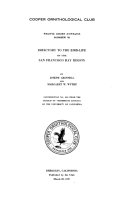
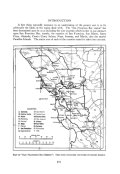 |
|
A Distributional List of the Birds of British ColumbiaAllan Brooks, Harry S. Swarth
Pacific Coast Avifauna Number 17
Cooper Ornithological Society
1925
From the introduction: "A list of the birds of British Columbia was written by John Fan&, Curator of the Provincial Museum, Victoria, about 1889. The senior author of the present publication recalls having had it submitted to him by Fannin for corrections and additions. Fannin's "Check-List, of British Columbia Birds" appeared in 1891. These two papers comprised the first lists of the birds of the entire province of British Columbia. The much earlier publication of J. K. Lord (1866) covers only such species as were personally collected or observed by that author. Fannin's 1891 list includes 307 species and subspecies; in the present publication 409 species and subspecies are catalogued, exclusive of introduced species. The territory covered by the present distributional list is that contained within the political boundaries of the province of British Columbia; the list includes all of the bird species now known to occur within the province. Practically, however, we have been obliged to exclude from consideration the extreme northeastern corner of the province, that portion lying east of the Rocky Mountain divide (see zone map, plate II). There is a dearth of definite information regarding the birds of that section, either published or within our own personal experiences; nothing has been written upon the ornithology of that immense region. The area referred to, roughly triangular in shape, is, in its southern portion, a northwestern extension of the Great Plains region, of entirely different fauna1 affinities from any other part of British Columbia. There is no doubt that investigation there would disclose the presence of many species, mostly eastern birds, that are not included in this list. The northern extremity of this terra incognita forms part of the great sub-Arctic forest."
|
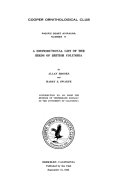
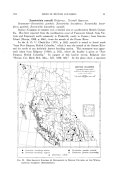 |
|
Bibliography of California Ornithology Second Installment to End of 1923Joseph Grinnell
Pacific Coast Avifauna Number 16
Cooper Ornithological Society
1924
From the introduction: "The present contribution may properly be characterized as a further 'report of progress' in the work, the first results of which were set forth in Pacific Coast Avifauna No. 5, issued May 15, 1909. That first installment of 'a bibliography of California ornithology' contained 1785 titles, all that were then known to the author, and covered the period from 1797 to the end of 1907. The present, second, installment lists titles for the succeeding sixteen years, that is, from 1908 to 1923, inclusive; and there are also given those titles that have come to the writer's attention for the years preceding 1908 that were not included in the first installment. The titles now collected number, all told, 2286. The entire number listed in the two 'installments' is 4071."
|

|
|
Birds Recorded from the Santa Rita Mountains in Southern ArizonaFlorence Merriam Bailey
Pacific Coast Avifauna Number 15
Cooper Ornithological Society
1923
From the introduction: "The recorded birds from the ranges adjoining the Santa Ritas-the Santa Catalinas and the Huachucas - have long since been published on by Mr. W. E. D. Scott and Mr. H. S. Swarth and others, but comparatively little has been published on the available material from the Santa Rita Mountains which, as Mr. Swarth discovered, have a markedly different set of breeding birds from that of the Huachucas. Work has been done in the Santa Ritas at various times for fifty years, from 1873 to 1923, on both sides of the range, in almost every month of the year, and it has seemed desirable to bring the resultas together, not only for the convenience of students of distribution and migration, but for the benefit of future field students in this interesting Mexican borderland. The warm valleys on the eastern and southern sides of the mountains may add some winter residents to the foothills not found on the northern and western sides; the migrations may at any time and place afford rewarding surprises; and much may be learned by a study of the life histories of the summer residents, especially of some of the many hummingbirds and rare Mexican species straying across the border."
|
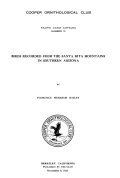
 |
|
A Distributional List of the Birds of Montana with Notes on the Migration and Nesting of the Better Known SpeciesAretas A. Saunders
Pacific Coast Avifauna Number 14
Cooper Ornithological Society
1921
From the introduction: "TheE ornithology of Montana, as compared with that of most other western states, is still in a primitive condition. While the earliest explorations and reports were made at about the same time as those of other western states, ornithological work since that time has not kept pace with what has been done elsewhere. Settlement of the state, until recently, has been slow, and there have been comparatively few resident ornithologists. Little collecting has been done. Sets of specimens are almost unknown. Most of the specimens .that have been collected are scattered through private collections. The results of much of this field work have never been published, and when they have, identifications have often been rather loosely made. For these reasons the present list cannot compare in either completeness or detailed accuracy with other recently published state lists. There is much of importance yet to be learned of the local distribution of even the commoner species. Subspecific status is in many cases unsettled. The future will probably see mauy changes and additions on the basis of the present list, and it is hoped that, its publication will stimulate work that will sooner bring these changes to accomplishment."
|
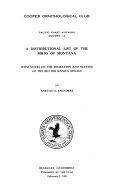
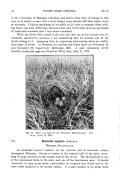 |
|
Second Ten Year Index to the Condor Volumes XI-XX 1909-1918J. R. Pemberton
Pacific Coast Avifauna Number 13
Cooper Ornithological Society
1919
From the introduction: "The writer has been occupied nearly a year and a half in the preparation of this the second ten year index to The Condor. Following upon consultation with the editors of the publications of the Cooper Ornithological Club, one hundred circular letters asking for suggestions were sent to such representative Club members as were thought would be most interested in the effectiveness of such an index. From the answers received the present plan was evolved and adopted. The procedure followed consisted in making up a card index, allowing one card for each species, each locality, and each author. The annual indexes to The Condor were not used except in checking for errors and omissions. This card index was completed almost simultaneously with the appearance of the last issue of The Condor for 1918. The whole was then typewritten, checked Item by item, and submitted to the editors."
|
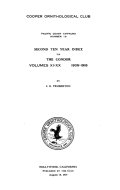
|
|
Birds of the Islands off the Coast of Southern CaliforniaAlfred Brazier Howell
Pacific Coast Avifauna Number 12
Cooper Ornithological Society
1917
From the introduction: "The need for a publication of some kind embracing all possible information in regard to the avifauna of the islands off the coast of southern California first came to my attention in 1908. At that time I began compiling lists of the birds of each of the islands, for my own use only; but, at the suggestion of a few friends, I began four years ago to get these notes into shape for publication. This was undertaken, not because I have worked the islands more thoroughly than anyone else, which is not the ca.se, but because of the special interest I have in the region. The present contribution was completed and delivered to the Editors in October, 1915, but for various reasons the Club has been long delayed in its publication. During this delay, I have taken the opportunity of bringing the paper up to date, with the beginning of 1917. The territory covered in the present paper consists of the Santa Barbara Islands as properly restricted: Anacapa. Santa Cruz, Santa Rosa and San Miguel, with certain outlying rocks; the more southern group, popularly included under the same general term: Santa Barbara, San Nicolas, Santa Catalina, and San Clemente; and Los Coronados Islands. The last mentioned group does not lie off the coast of southern California, being Mexican territory and pertaining to Lower California, but is included in this report because of location nearby, and because of fauna1 similarity to the other islands named."
|
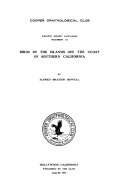
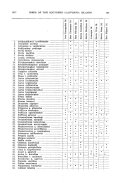 |
|
A Distributional List of the Birds of CaliforniaJoseph Grinnell
Pacific Coast Avifauna Number 11
Cooper Ornithological Society
1915
From the introduction: "Apparently the first attempt to catalog all the birds known at any one time from California was made by Dr. James G. Cooper in his unsigned contribution to Cronise's Natural Wealth of California (pp. 448-480), published in 1868. A brief running account is there given of 353 species. In 1890, Lyman Belding (Occasional Papers, II, California Academy of Sciences) ascribed 295 species of land birds to California, and in 1892, Walter E. Bryant (Zoe III, pp. 135-140) listed 150 water birds, making a total of 445 species and subspecies then credited to the state. Ten years later, in Pacific Coast Avifaulaa number 3, 1902, the present writer enumerated, with brief annotations, 491 species and subspecies; and in 1912, in Pacific Coast Avfauna number 8, the same author gave a nominal list of 530 forms. The present contribution shows a total of 541 species and subspecies believed at the time of going to press, May 1, 1915, to properly belong to the Recent avifauna of the state."
|

|
|
A Distributional List of the Birds of ArizonaHarry S. Swarth
Pacific Coast Avifauna Number 10
Cooper Ornithological Society
1914
From the introduction: "The beginning of this list of the birds of Arizona dates back about eleven years, to a time when the author was engaged in field work in that state. A hasty compilation was made of a few local lists, and the manuscript carried in the field as a guide and aid in making observations and collections. This beginning proved an incentive to the gathering of farther data, and shortly after, the opportunity presenting itself for visiting more extensive libraries than had hitherto been available, a careful and systematic search was made through the literature dealing with the ornithology of Arizona. The resulting information was filed away and added to as chance offered, ‘but more pressing work and other interests interfered to prevent the whole from being put into shape for publication. Furthermore it soon became evident that while a fairly long list of species could be compiled as occurring within the state, the published information concerning a large proportion of them was scanty and fragmentary. The writer had hoped to be in a position to continue field work in certain little known sections of the state, where undoubtedly there is much to be added to our knowledge of the birds, but this contingency became more and more improbable, and under the circumstances it seemed advisable to publish the list as it now stands."
|

|
|
Some Birds of the Fresno District, CaliforniaJohn G. Tyler
Pacific Coast Avifauna Number 9
Cooper Ornithological Society
1913
From the preface: "In presenting this list of the birds of the Fresno district the author is aware of its incompleteness. In this connection it might he well to state that some fifty species of birds reported from various sources have been omitted entirely for the reason that nothing definite could be recorded in regard to their habits and distribution, or because some doubt existed as to their being correctly identified. More than ten years have elapsed since the first notes for this work were jotted down and in view of the mass of data available it seemed worthwhile to put on record the result of these years of observation in a region that has been all but neglected by ornithologists. In looking over such literature as was available the writer has frequently been impressed with the lack of definite dates and other information regarding many of our most common birds. In many cases only two or three nesting or migration dates have been available from the entire State and these from widely separated points. It was the desire to place on record the many apparently obvious but hard-to-find facts pertaining to the birds of central California that, more than anything else perhaps, induced me to hasten the completion of this work."
|
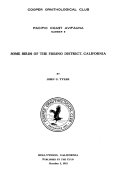
|
|
A Systematic List of the Birds of CaliforniaJoseph Grinnell
Pacific Coast Avifauna Number 8
Cooper Ornithological Society
1912
From the introduction: "It is believed that students of western ornithology will find use for a list of the birds of California arranged in accordance with the most modern views on classification. The following arrangement of our species will be observed to depart widely from that presented in most of the current textbooks. The majority of the latter in America are based upon the classification adopted twenty-six years ago in the first edition of the American Ornithologists Union Check-List of North American Birds. The system of grouping employed in the following pages is almost identically that based chiefly upon Gadow and presented by Knowlton. It is also very similar to that chosen by Ridgway in his latest systematic treatise on North American birds. My allegiance to Knowlton's interpretation of the modern views of avian classification results from my belief, insofar as I have made inquiry and am able to judge, that lie expresses most faithfully the concensus of opinion of those systematists whose accomplishments bring greatest confidence. Knowlton states his system to differ from Gadow's in certain minor modifications necessitated by 'the later researches of Pycraft, Beddard, Darcy-Thompson, Shufeldt, Ridgway, Lucas, and other well-known authorities'."
|
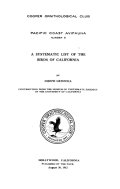 |
|
Birds of the Pacific Slope of Southern CaliforniaGeorge Willett
Pacific Coast Avifauna Number 7
Cooper Ornithological Society
1912
From the introduction: "In February, i910, at the request of the Southern Division of the Cooper Ornithological Club, I began the compilation of the paper presented herewith. The first idea of the Club was to revise Grinnell's Birds of the Pacific Slope of Los Angeles County, published in 1898 by the Pasadena Academy of Sciences. It was finally decided, however, to extend the boundaries of the territory covered by that list so as to take in the Pacific slope of southern California from, and including, Santa Barbara County, to the Mexican line, and from the summit of the mountains to the ocean, also including all the islands of the Santa Earbara group. This territory comprises all of Santa Barbara and Ventura counties, Los Angeles County south and west from the Liebre Mountains, Sierra Pelona and Sierra San Gabriel, San Bernardino county south and west from the Sierra Madre and San Bernardino ranges, all of Orange County, Riverside County west from the San Jacinto Range, and San Diego County west from the Volcan and Cuyamaca ranges; also the eight islands of the Santa Barbara group, namely San Miguel, Santa Rosa, Santa Cruz, Anacapa, Santa Barbara, San Nicolas, Santa Catalina and San Clemente. In some cases I have deemed it advisable to refer to records outside the limits as described above in order to show certain connecting features in distribution or migration."
|
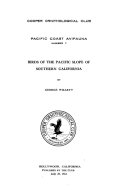 |
|
Index To The Bulletin To The Cooper Ornithological Club, Volume I - 1899, And Its Continuation The Condor Volumes II-X 1900-1908Henry Barroilhet Kaeding
Pacific Coast Avifauna Number 6
Cooper Ornithological Society
1909
From the introduction: "The following pages contain the Index to the first ten volumes of the Bulletin of the Cooper Ornithological Club, of which only the first volume (1899) bears this title, the subsequent nine (1900-1908) being known as 'The Condor.' There have been no special features embodied in this work for the reason that the present chaotic state of the nomenclature of North American birds renders any system based thereupon exceedingly unstable. It has been thought advisable, therefore, to list species and subspecies exactly as they were found to occur in the text, with only minor changes as will be noted herein."
|
 |
|
A Bibliography of California OrnithologyJoseph Grinnell
Pacific Coast Avifauna Number 5
Cooper Ornithological Society
1909
From the introduction: "I began the collection of titles for a bibliography of California ornithology in 1900, while a student at Stanford University. Since then I have taken every opportunity to secure additions to my list, while from year to year I have tried to keep it up to date. Nothing becomes more apparent to one engaged in this kind of an undertaking than the impossibility of ever attaining ideal accuracy or completeness. Three years ago I thought I had a fairly comprehensive bibliography up to that time. But only within a few months have I run across several important titles of early date which had been previously unknown to me. As I could not but suffer continued uncertainty, no matter how long I should withhold this contribution from publication, I present the results of my work as they are now, believing that they will prove of value to every other working bird student, as they already have to me."
|
 |
|
Birds of the Huachuca Mountains ArizonaHarry S. Swarth
Pacific Coast Avifauna Number 4
Cooper Ornithological Society
1904
From the introduction: "The Huachuca Mountains are a range which have been pretty thoroughly explored by investigators in various branches of natural history, but of which there has been but little published, at least of ornithological interest. A few scattered notes recording the occurrence of various rarities in that region, and some more or less carefully detailed accounts of the breeding habits of the most interesting and conspicuous species of birds inhabiting the mountains are about all that have appeared, but nothing of a general character; and as in the course of several seasons careful work in the mountains many interesting and surprising facts in distribution, migrations, etc., of various species were being continually encountered, which, while they may be familiar to the naturalists who have visited the range, are probably unknown to ornithologists in general, I have been induced to embody the results of nfy labors in the following pages."
|
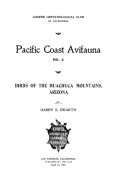 |
|
Check-List of California BirdsJoseph Grinnell
Pacific Coast Avifauna Number 3
Cooper Ornithological Society
1902
From the preface: "In compiling the present list, the author has tried to be reasonably conservative as regards the admission of species in doubtful standing. In order to be worthy of a place on the State List an 'accidental' must have been as a rule secured and preserved so that it can be re-identified whenever desirable. The more unusual and unexpected the alleged occurrence of a species, the better the evidence must be of such occurrence before it can be accepted as authentic."
|
 |
|
A List of the Land Birds of Santa Cruz County, CaliforniaRichard C. McGregor
Pacific Coast Avifauna Number 2
Cooper Ornithological Society
1901
|
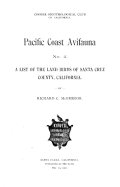 |
|
Birds of the Kotzebue Sound Region, AlaskaJoseph Grinnell
Pacific Coast Avifauna Number 1
Cooper Ornithological Society
1900
From the introduction: "The Kotzebue Sound Region, as here understood, includes the district coastwise between Cape Prince of Wales and Point Hope, and thence eastward to the headwaters of the streams flowing into Kotzebue Sound. This hydrographic basin, as indicated in the accompanying map, thus consists of the valleys of the Noatak, Kowak, Selawik and Buckland Rivers, as well as several smaller streams, all of which empty into Kotzebue Sound. In the spring of 1898 the writer joined a company of prospectors who intended to explore the Kowak Valley for gold or any other valuable resource this little-known country might afford. We were thoroughly outfitted for such a venture, owning our own schooner-yacht, the "Penelope," and taking with us lumber and machinery for a stern-wheel river steamer to be used on the larger streams of the region. The expedition proved a disappointment in the matter of the hoped for gold, but this fact was rather fortunate for the writer and his ornithological pursuits, for he was enabled to devote almost his entire time during the year spent in the Kotzebue Region to collecting specimens and notes on its avifauna. The results constitute a part of the present paper."
|
 |
|